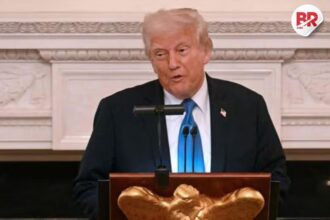
Since President Trump’s tariffs began impacting global markets, dealmakers have been scrambling to adjust. With stock prices fluctuating and global trade slowing, companies are seeking innovative strategies to preserve their billion-dollar mergers and acquisitions (M&A).
But despite these challenges, some high-profile deals have moved forward, showcasing the persistence and creativity of those involved.

Silver Lake and Intel’s Strategic Maneuver
A prime example of this new approach is the $4.46 billion deal between Silver Lake Partners and Intel for Intel’s Altera unit. Originally, the agreement was straightforward, but the tariffs added an unpredictable element.
To mitigate risks, the companies renegotiated terms. By deferring $1 billion in payments, they created a more flexible financial arrangement that could withstand the pressure of fluctuating tariffs.
This move illustrates how companies are thinking outside the box to protect major deals in times of uncertainty.
Global Payments and Worldpay: Honoring Pre-Tariff Share Prices
Another significant deal involved Global Payments, which finalized its $24.3 billion acquisition of Worldpay. Even after a steep 15% stock plunge due to the tariffs, Global Payments honored pre-tariff share prices, ensuring that Worldpay shareholders were not impacted by the market turmoil.
The deal’s persistence highlights how companies are doubling down on long-term value, regardless of short-term challenges.
It’s a reminder that in the world of M&A, patience often pays off.
Also Read Port Fees Meant to Hurt China Could Hit Americans Harder
Prada and Versace: Luxury Deal Defies Market Disruption
On the luxury side, Prada made headlines by securing a $1.38 billion deal for Versace. This agreement came right after U.S. regulators blocked Capri Holdings’ merger with Tapestry.
While some might have feared the disruption caused by tariffs, Prada pushed forward with the deal, demonstrating that strategic persistence can yield results even amid market volatility.
Key Trends in M&A Amid Trump Tariffs
These examples illustrate several key trends that are emerging as dealmakers face the reality of Trump’s tariffs:
- Creative Financing – Companies are finding new ways to structure deals. For instance, earnouts, deferred payments, and contingent value rights (CVRs) are becoming common again. Silver Lake’s staggered payments for Intel’s Altera unit are a perfect example of this trend.
- Strategic Persistence – Despite the unpredictability of the tariff situation, companies with long-term logic are continuing with their deals. Prada’s acquisition of Versace, for example, shows how even in the face of regulatory blockages and market volatility, some deals will forge ahead.
- Market Volatility – The global M&A volume has dropped by 29% year-over-year, totaling $98 billion in early April. This marks the worst Q2 start since 2020, according to Dealogic. While this slowdown is concerning, it also emphasizes the difficulty of navigating a market where every decision carries greater risk.
Also Read: Trump Wants to Fire Fed Chair Powell—What Happens If a President Actually Tries?
What Does This Mean for the Average Person?
For everyday people, these M&A shifts may seem like distant corporate maneuvers, but they have a real impact. Whether it’s the cost of luxury goods or changes in tech services, mergers and acquisitions often lead to shifts in pricing, quality, and availability.
Moreover, the creativity seen in these deals may signal a future where businesses are more adaptable, perhaps even more resilient, in the face of economic challenges.
The Ironic Twist: The Deal Game Gets More Complicated
The irony of this situation is almost absurd: tariffs meant to protect domestic industries are making it harder to finalize deals. In a way, President Trump’s policies are forcing dealmakers to get more creative, and possibly more cautious, in ways that no one anticipated.
It’s like trying to play poker with the rules constantly changing—everyone’s looking for new ways to bluff, but no one really knows what the cards will be next.
Resilience in the Face of Uncertainty
As we move forward, it’s clear that dealmakers aren’t backing down in the face of tariffs. Instead, they’re finding ways to adapt.
The creative financing strategies, persistence in long-term planning, and recognition of market volatility are all key factors that will shape the future of M&A deals. While the global market may be in turmoil, companies are proving that innovation and strategic thinking can still lead to success.
Also Read: US-China Trade Talks Hit Roadblock: What’s Keeping the World’s Economies Apart?












